
We hope you have a very enjoyable stay. There are a few suggestions below of things you may wish to consider doing. Whatever you decide to do, have a great time.
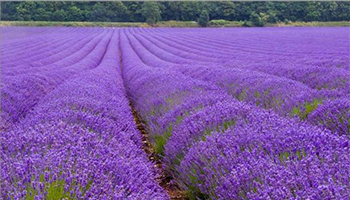
If arriving from Launceston, take your time and make a day of the delightful journey. Leaving Launceston, take the East Tamar Highway, and then turn right into Lilydale Road. Continue on to Golconda and follow the signs to the Bridestowe Lavender farm, about 40 minutes drive.
Bridestowe is the largest commercial lavender farm in the southern hemisphere. At any time of the year, the farm is a spectacular sight – fresh green in spring, a shimmer of purple in summer, silvery-grey in winter. Have a coffee (or try the lavender ice-cream!) in Bridestowe’s café, then take a tour (December and January) to see how lavender is harvested and processed for its fragrant oils.
For a pleasant diversion head to Bridport, 30 minutes north. Here, enjoy one of Bridport’s several coastal walks. The walk through the Wildflower Reserve is particularly pleasant with views out over Anderson Bay, and is spectacular in spring as you walk through a mass of wildflowers to Adams Beach. From the centre of Bridport, a pleasant 1km foreshore walk takes you along a series of small beaches to the popular Old Pier swimming beach.
Head back in the direction you came towards Scottsdale, the major service town for the north east. Here you can discover the secrets of the region’s forest heritage at the contemporary Forest EcoCentre.
The next town on your journey is Branxholm in the Ringarooma Valley. But before reaching Branxholm, take the turn off to Ringarooma and follow the signs to the impressive Ralphs Falls in the Mt Victoria Forest Reserve. A ribbon of water and sweeping views across picturesque farmland will greet you after an easy 10 minute walk through myrtle rainforest.
At Branxholm pause at the Red Bridge a sign of the significant Chinese mining heritage of the area. Shortly afterwards you’ll arrive at Derby, once a thriving mining town in the late 19th and early 20th centuries and today a pretty place to stop on your journey. Learn about the history of the area at the Tin Mine Centre and Shanty Town and then stay for a pleasant lunch in what was once an old school house. Then stroll over the road and spend time at the cafes, craft shops and galleries.
Back on the road, continue on through to Weldborough and the Weldborough Pass Scenic Reserve – just off this road is an enchanting 10 minute Rainforest Walk where you stroll beneath tall Myrtles and learn more about these ancient trees. About 10 minutes after Weldborough, is the turn-off to the Blue Tier Nature Recreational Area where you can choose from a range of walks of 15 mins to five hours duration. The 2.5 km road to the walking tracks is unsealed, but is well worth the drive. The Big Tree Walk (one hr return or 90 mins loop walk) takes you through a stunning sassafras and fern glade, descending through huge eucalypts, musk, myrtle, mosses and ferns to the Blue Tier Giant tree with its massive 19.4 metre girth. The Reserve also bears further evidence of the region’s tin mining legacy. On Australia Hill see the remains of boilers and jockey wheels and wander among the ruins of what was once a mountain mining village.
Continue on to St Helens, stopping for supplies in town. Follow the Tasman Highway, south through St Helens and turn right into St Helens point Road. Arrive home, make yourself comfortable, put your feet up and enjoy the view.
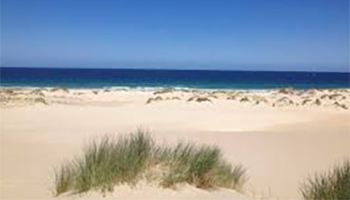
Today we’ll stay close to home and explore St Helens itself. There are several walks that can be done on St Helens Point ranging from a ten minute stroll to the Navigation beacon lookout, to hour long walks from Burns Bay to Beer Barrel Beach or Peron Dunes to Maurouard Beach.
Head into town and visit the St Helens History & Visitor Information Centre opposite the Post Office, packed with fascinating relics of the region’s fishing, timber and tin mining history and Aboriginal and Chinese heritage. Here you’ll also find details of bushwalks, bus tours and dive and fishing charters, as well as events on in the area during your stay.
Head for the water’s edge and stop for lunch. Join the locals for fish and chips at Captain’s Catch. Afterwards, take a walk along the grassy foreshore, this is a lovely hour long walk across the bridge south through Kings Park and around the bay. Look out for bikes as this doubles as a cycleway!
If you didn’t try Captains Catch for lunch you could consider it for dinner instead, it is a great spot for alfresco dining under the stars. Alternatively, try Ripples Restaurant and Bar for great local produce with lovely views. Or, of course you can relax at home and prepare your own meal in the fully functional kitchen.
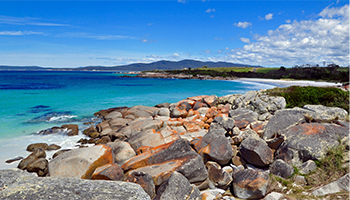
Less than 15 minutes drive from the home is the famous Bay of Fires. The Bay of Fires has recently been voted one of the top two beaches in the world by Conde Nast and one of the Lonely Planet’s top ten regions for 2009. To quote Lonely Planet, The Bay of Fires is, “White beaches of hourglass-fine sand, Bombay Sapphire–blue sea, an azure sky – and no one. This is the Bay of Fires: the secret edge of Tasmania, laid out like a pirate’s treasure map of perfect beach after sheltered cove, studded with lichen-orange rock gardens and fringed with green forest. It’s where you can always find a beach to yourself, and where the key ingredient is tranquillity.”
A trip to St Helens without a visit to the Bay of Fires would not be complete. In Summer don’t forget your swimmers, the water is crystal clear, blue and very inviting! It is also a great place to enjoy virtually any water activities. Fishing, surfing, kayaking and diving are all very popular. The truly great thing about the Bay of Fires is the lack of crowds. If you are used to jostling for space on Bondi Beach you will be taken aback by the absence of people. There are many beaches to choose from at the Bay of Fires, so you can just keep going until you find a secluded one.
This also a great place to visit all year around. Winter is a particularly beautiful time of year in Tasmania. The days are very still and clear, the perfect time to walk along, along these beautiful beaches. There are a number of walks to choose from ranging from short beach strolls to the Humbug Point Nature Recreation Area Circuit which takes six to seven hours.
Plan to be in Binnalong Bay for dinner. Angasi is a gourmet’s delight, and has fantastic views over the bay. The menu is seasonal, but seafood always features prominently.
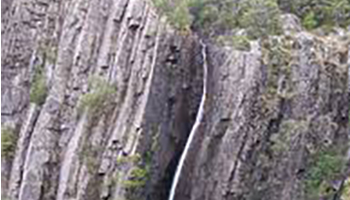
Today we shall head inland to Pyengana and then to St Marys. Firstly, take the Tasman Highway north through St Helens and on towards Pyengana. The settlement of Pyengana is home to the Pyengana Cheese Factory and Holy Cow Café, the factory is famous for its full-flavoured clothbound cheddars. To get there, turn down the St Columba Falls Rd at Pyengana.
After you’ve enjoyed a snack or a hearty ploughman’s lunch and purchased some produce to sample later, continue on to St Columba Falls State Reserve and see the magnificent 90 metre St Columba Falls. The walk to the Falls is one of Tasmania’s 60 great short walks and is an easy 10 minute walk through rainforest to the lookout. Feeling thirsty? On the way back, stop in at the famous Pub in the Paddock which served its first beer over 100 years ago.
In the afternoon, head back towards St Helens and then a further half an hour south to the picturesque town of St Marys, set high in the mountains at the eastern end of the scenic Fingal Valley. Winding up the escarpment to the town is the convict-built St Marys Pass, and winding back down to the coast at Chain of Lagoons is Elephant Pass, home of the famous Mount Elephant Pancakes.
St Marys is the setting-off point for a range of excellent walking trails. If you’re fit, the steep 90 minute climb to St Patricks Head is worth the effort for the spectacular panorama.
For information and a great espresso visit Escape Tasmanian Wilderness Café Gallery opposite the Post Office. Drive west to the village of Cornwall and visit the Coalminers Heritage Wall and Cornwall Collectables for a possible rare find.
Continue on the road to Fingal, 20km from St Marys, and turn off to the Evercreech Forest Reserve with the tallest white gums in the world. On the way back, visit Mathinna’s Golden Gate Gallery, featuring displays of historical artefacts and local art.
Plan on an early dinner at the Mt Elephant Pancake Barn, but be warned they close at 6pm. It will be well worth it though as these pancakes are justifiably famous. They do sweet and savoury pancakes so all courses are covered!
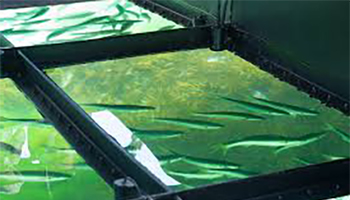
Today we’ll journey south about an hour to Bicheno, enjoying beautiful coastal scenery along the way. En route south, detour to the Apsley River Waterhole for a refreshing dip, or just an enjoyable walk at the edge of Douglas Apsley National Park.
The East Coast Natureworld, 8km north of Bicheno, is a great place to see Tasmanian devils, wombats, snakes, and birdlife, many in a natural environment. Try to be there at either 4pm for feeding time, you will get so close to the devils you can smell their breath, a mixed blessing!
Bicheno is a charming seaside resort town noted for its excellent fishing facilities, safe and attractive beaches and interesting coastal walks which include some superb rocky outcrops and spectacular blowholes. Explore the Gulch at Bicheno, where fishing boats traditionally shelter from the wild seas.
Come dusk you will be in for a real treat. Bicheno is home to a colony of fairy penguins. Bicheno Penguin Tours takes you to see these delightful fairy penguins on their journey home to their beachside burrows. The tours operate year round, although during summer there are more penguins about.
After the tour, enjoy dinner at the Sea Life Centre Steak & Seafood Licenced Restaurant. Here not only will you enjoy a great meal, but you may again see the penguins heading home.
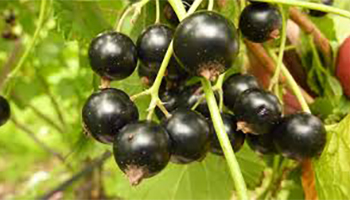
Today we’ll head south again, past the same spectacular coastline as yesterday. Today we’ll explore just south of St Helens towards and around Scamander. From the home head south along the Tasman Highway to Dianas Basin. Dianas Basin is actually part of the St Helens Point Conservation Reserve. Here you will see amazing rock “folds”, ancient rock formations. It’s a one hour return walk to point along the beach.
Scamander is the largest of the seaside towns along the coast, all popular holiday destinations on long stretches of pure white sand. Scamander is a great spot for fishing, both from the beach and from the old Scamander River bridge.
Don’t miss a visit to Eureka Farm just south of Scamander for their award-winning fresh fruit ice-cream and jams. During summer you can pick your own fruit and the cafe is a great spot to stop for lunch. Opposite the turnoff to the farm, is the Winifred Curtis Scamander Reserve. There are a variety of walks through native forest with wildflowers. Try the Old Coach Road to the ford a pleasant 40 minutes return walk.
Today we’ll head south again, past some of the same spectacular coastline. Today we’ll explore just south of St Helens towards and around Scamander. From the home head south along the Tasman Highway to Dianas Basin. Dianas Basin is actually part of the St Helens Point Conservation Reserve. Here you will see amazing rock “folds”, ancient rock formations. It’s a one hour return walk to point along the beach.
Scamander is the largest of the seaside towns along the coast, all popular holiday destinations on long stretches of pure white sand. Scamander is a great spot for fishing, both from the beach and from the old Scamander River bridge.
Don’t miss a visit to Eureka Farm just south of Scamander for their award-winning fresh fruit ice-cream and jams. During summer you can pick your own fruit and the cafe is a great spot to stop for lunch. Opposite the turnoff to the farm, is the Winifred Curtis Scamander Reserve. There are a variety of walks through native forest with wildflowers. Try the Old Coach Road to the ford a pleasant 40 minutes return walk.
For over 100 years, API Leisure & Lifestyle has provided amazing savings on everyday expenses. Click here to check your personal saving potential or call us on 1300 653 322.